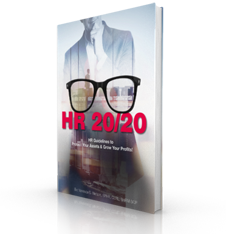The tragedy we can’t ignore
On July 10, 2025, McDonald’s manager Jennifer Harris—a 39-year-old mother of six and 15-year employee—was fatally stabbed at her Eastpointe, Michigan restaurant after sending an agitated crew member home. The employee allegedly left, returned wearing a mask, and attacked Harris in front of co-workers and customers.
Her death is heartbreaking—and painfully illustrative of a larger crisis. In 2023 alone, 740 U.S. workers were killed by violent acts on the job, accounting for nearly 9 percent of all occupational fatalities. It is crucial that HR not treat safety as a footnote; it should be embedded in policy, culture, and daily operations
Safeguard 1: Treat every threat—verbal or digital—as credible
Whether an employee mutters a violent remark in the break room or posts “I’ll make them pay” on Facebook, log it, escalate it, and investigate within 24 hours. Social-media threats that reference the workplace should trigger the same protocols as on-site threats.
Safeguard 2: Spell it out in policy
Add a “Workplace Safety & Social-Media Conduct” clause to your handbook. Define prohibited behavior, outline zero-tolerance for threats, and specify consequences up to immediate termination and law-enforcement referral
Safeguard 3: Create anonymous reporting channels
Hotlines, QR-code forms, or text lines empower peers to speak up without fear of retaliation. Make reporting as simple as snapping a photo of a threatening post and uploading it to an online portal.
Safeguard 4: Train supervisors to spot escalation early
Equip every leader with de-escalation techniques, warning-sign checklists, and a clear hand-off protocol to HR or security. Refresher training should be mandatory at least once a year.
Safeguard 5: Document—and act—quickly
A written incident log, witness statements, and timeline protect employees and the organization if litigation follows. Aim to initiate your response plan within the first business day of any threat.
Safeguard 6: Coordinate with local law enforcement
Invite police to walk your site, review your emergency action plan, and advise on response times. Annual joint drills reinforce muscle memory if a real crisis occurs.
Safeguard 7: Provide accessible mental-health resources
Employee-assistance programs, crisis-counseling vouchers, or partnerships with tele-therapy providers give at-risk staff a pressure valve before anger turns violent.
Safeguard 8: Audit your culture—and act on red flags
High turnover, unresolved grievances, and cliques can fuel resentment. Regular climate surveys and stay-interviews surface issues early. When patterns emerge, intervene with coaching, mediation, or disciplinary action.
Download the checklist & policy template
Want a step-by-step threat-response flowchart and a plug-and-play social-media clause? Email [email protected] or click here to grab our Workplace Violence Prevention Toolkit—free for leaders and business owners committed to a safe workforce
Final thought
Safety culture isn’t built on hope; it’s built on policy, vigilance, and the courage to act the moment a red flag appears.
If you’d like a rapid HR-safety audit or help updating your handbook, schedule a 30-minute consult with me here. Let’s ensure every employee—and every manager—gets home safe tonight
About Expert Human Resources
Expert Human Resources is a Michigan-based, 100 percent online HR consulting firm specializing in HR audits, workplace investigations, AI-driven turnover analytics, and compliance training. We help organizations protect their people and their peace of mind.




